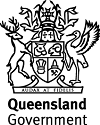Published Monday, 09 July, 2007 at 04:24 PM

Minister for Natural Resources and Water and Minister Assisting the Premier in North Queensland
The Honourable Craig Wallace
BRIGALOW BELT TOPS QUEENSLAND LAND CLEARING
Tree clearing to make way for pasture in the Brigalow Belt and the Mulga Lands of Queensland made up the bulk of land clearing in 2004/05, statistics released today show.
Natural Resources and Water Minister Craig Wallace released annual Statewide Landcover and Trees Study (SLATS) data for 2004/05, which showed tree clearing throughout Queensland was continuing to decline from a peak in 1999/2000.
The statewide average annual clearing rate for woody vegetation in Queensland was 351,000 hectares per year, a fall of 27% from the 2003/04 year, Mr Wallace said.
The 2004/05 Queensland clearing reductions equate to savings of 8.8 million tonnes of greenhouse gases.
“I give due credit to Queensland landholders who are the main reason for this result,” Mr Wallace said.
“Landholders are now beginning to reap benefits from retaining rather than destroying vegetation,” he said.
“Some 94% of the clearing that was carried out in 2004/05 was to make way for pasture,” Mr Wallace said.
It was notable that woody vegetation clearing in the Desert Uplands bioregion has been declining since 1999-2000 and was now at its lowest reported level of 20,600 hectares per year, Mr Wallace said.
Data from the SLATS figures was analysed according to the state’s 13 biogeographic regions.
In the Brigalow Belt biogeographic region, the rate of clearing during 2004/05 was 143,000 hectares a year, of which 134,000 hectares per year was cleared for pasture and 2,860 hectares per year was for forestry.
The Mulga Lands’ clearing rate was 127,000 hectares per year in 2004/05, of which 126,000 was for pasture.
South-East Queensland had the third highest rate of land clearing for the year, at 21,000 hectares per year. Most of that was for pasture (13,760 hectares per year), followed by forestry (5,430 hectares per year) and settlement (1,320 hectares per year).
The Brigalow Belt accounted for 40.6% of the total land clearing in Queensland in 2004/05, followed by the Mulga Lands (36.1%) and South-East Queensland (6.1%).
The balance of total land clearing in 2004/05 by biogeographic region was:
Desert Uplands (5.9%); Mitchell Grass Downs (4.6%); Gulf Uplands (3.3%); Einasleigh Uplands (0.9%); Cape York Peninsula (0.7%); Central Mackay Coast (0.6%); Northern New England Tablelands (0.5%); Channel Country (0.5%); Wet Tropical Rainforest (0.3%) and the North West Highlands (0.05%).
Queensland recorded an environmental achievement of world significance late last year when the Beattie Government ended broadscale clearing of native vegetation.
This followed a phase-out period which began in 2003.
Before that up to 500,000 hectares of native vegetation was being cleared annually, with a peak of up to 758,000 ha in 1999/2000.
The end of broadscale clearing in Queensland will lead to a cut in greenhouse gas emissions by an estimated 20 million tonnes each year.
The full text of the reports will soon be available at www.nrw.qld.gov.au/slats
Note: numbers may not add up due to rounding.
Electronic version of a table showing Woody Vegetation Clearing by Biogeographic Region and Sub-region available upon request. Colour map also available.
Media inquiries: Paul Childs, Craig Wallace’s office, on 0407 131 654.

